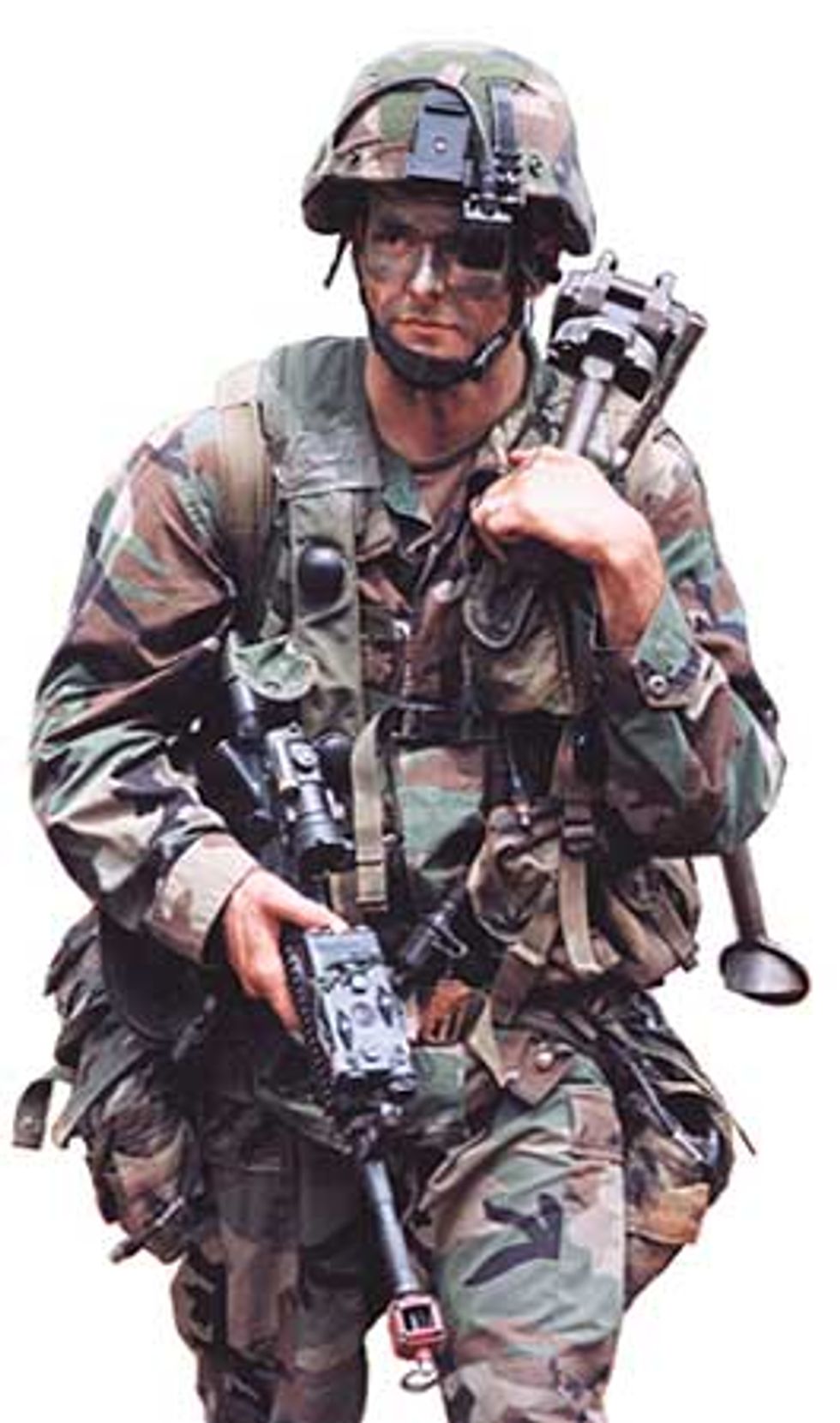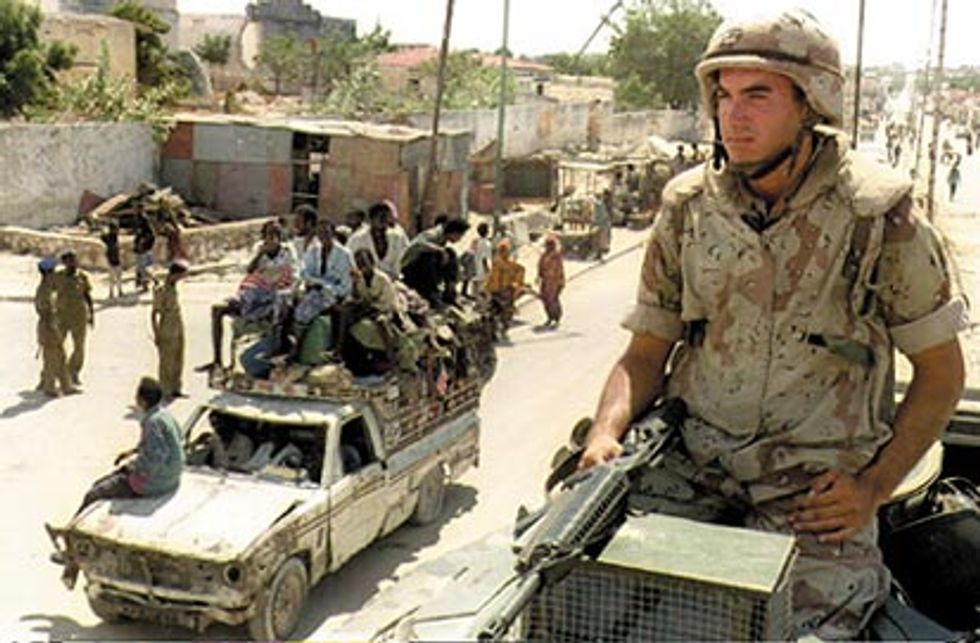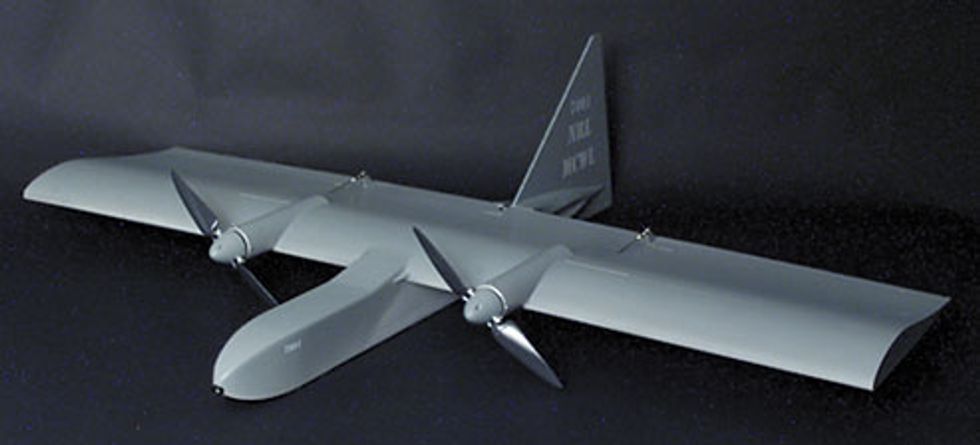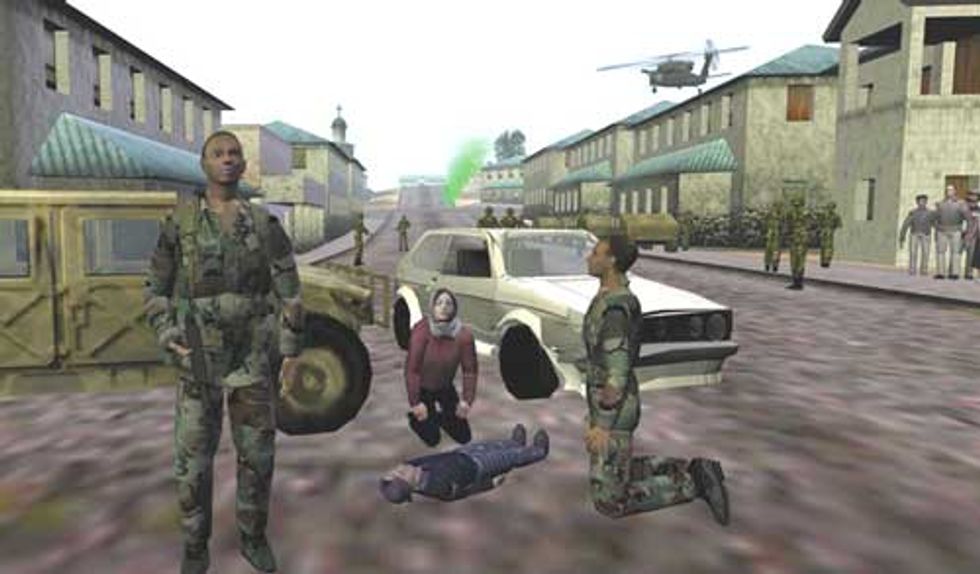Fighting in the Streets
Faced with the mounting likelihood of urban warfare, military experts are seeking ways to reduce its deadliness and destructiveness
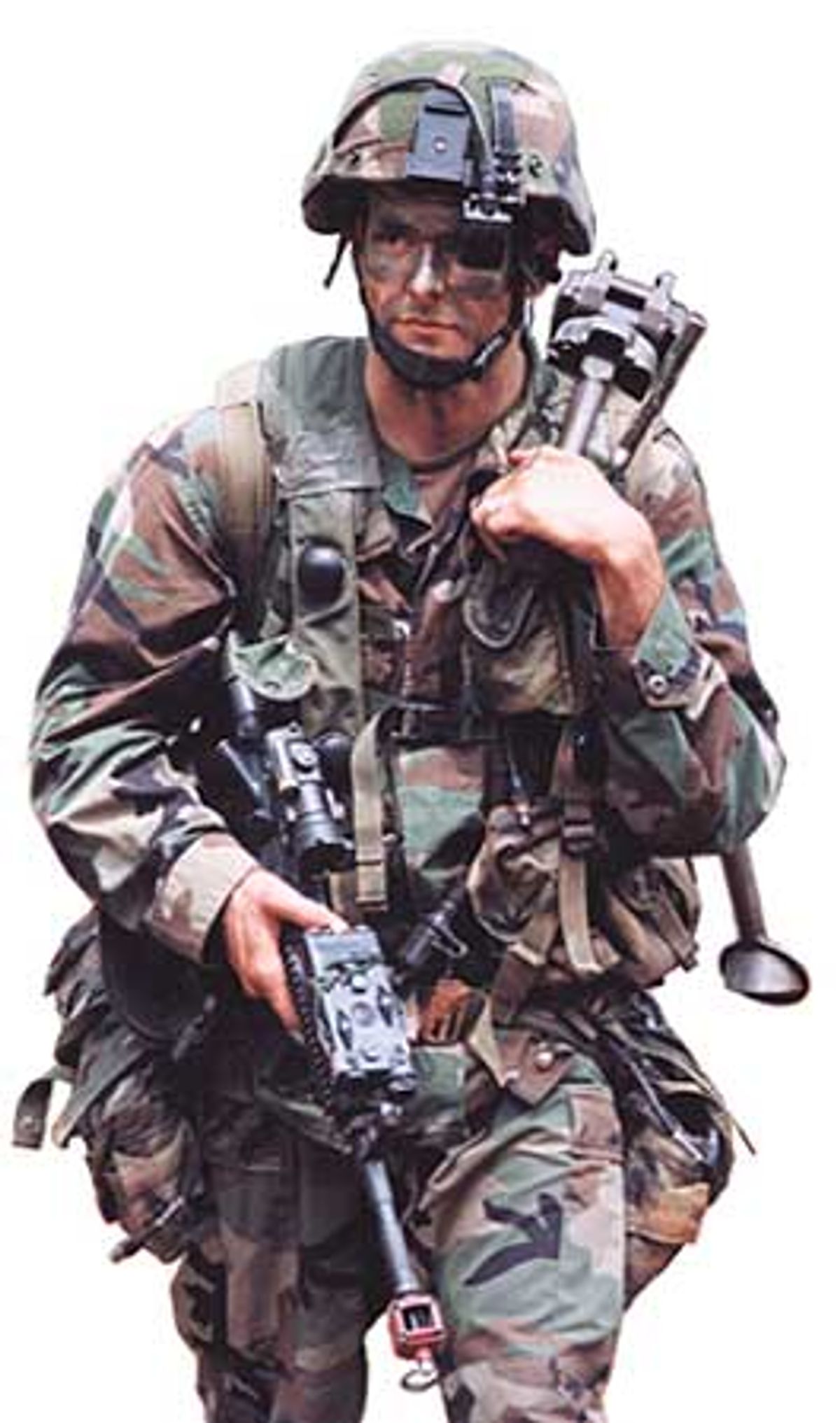
In March of 1999, the U.S. Marines invaded California. Descending on an old Navy hospital in Oakland, they attempted to wrest it from guerilla fighters encamped there. Despite being armed to the teeth with the latest intelligence-gathering and assault weaponry, they suffered devastating losses, some units reporting casualty rates as high as 70 percent after just a few hours of fighting.
The Oakland raid was an exercise, of course, and no one actually died. But it drove home an important lesson, and one that military experts have harped on for years: despite all its advanced technology and extraordinary fire power, the U.S. military is ill-prepared to wage an urban war. Nor is it alone. Russian troops succeeded in routing Chechen fighters from the capital city of Grozny only after flattening whole neighborhoods and killing thousands of civilians. The last decade has seen similarly destructive campaigns waged in Sarajevo and Mogadishu and many other cities around the world.
"Virtually every recent U.S. military operation has had an urban component," noted Russell Glenn, a senior research analyst and urban warfare expert at Rand Corp., Santa Monica, Calif. "It's not something that we can afford to be casual about."
Not that there's any good place to hold a war, but, in terms of lives lost and property destroyed, cities are the most costly settings in which to do battle. Writing some 2500 years ago, the Chinese military strategist Sun Tzu warned, "The worst policy is to attack cities. Attack cities only when there is no alternative."
As it happens, though, the likelihood of urban warfare will only grow in the coming years. Half of the planet's people now live in and around cities, and by the end of the next decade, about 70 percent are expected to do so. Accordingly, the U.S. military, and to a lesser extent its counterparts in Israel, Australia, and several NATO countries, have been taking a good hard look at how to win the next urban war. That entails developing new technologies to aid the urban warrior, revamping training programs, and rethinking the guiding doctrine underlying military operations.
High-density battles
What makes urban battles so thorny are their sheer complexity and unpredictability. "Think of it in terms of density," Glenn suggested. "Per unit volume, the city has more friendly forces, more enemy forces, more noncombatants, more firing positions, more enclosures." What's more, the technological edge that well-armed troops normally enjoy grows noticeably duller in the city. Long-range artillery is too destructive and imprecise, tanks cannot negotiate narrow streets, radio and navigation signals falter inside buildings and underground.
Nowhere were the limits of technology more apparent than in the United States' disastrous mission in Mogadishu in 1993. In that battle, some of the best-equipped, best-trained soldiers in the world went up against a rag-tag militia--and lost. Using simple rocket-propelled grenades, Somali fighters downed two state-of-the-art Blackhawk helicopters and damaged three others. In a single day, 18 U.S. soldiers and some 500 civilians died.
One of the many things that tragedy taught was the importance of the psychological dimension in urban war. U.S. soldiers had expected to find a receptive civilian population, and so were shocked when unarmed but hostile mobs began harassing them. "We have to put ourselves in the other guys' shoes, because they're going to use things against us that we haven't even thought about," noted George Singleton, a national security expert at the U.S. Oak Ridge National Laboratory in Tennessee, who did a case study of the Mogadishu firefight.
Seeing through walls...
Another factor that proved disastrous in Mogadishu was the lack of so-called situational awareness, added Singleton. "There was a lot of confusion as to who was where, and who was doing what, and which direction various elements needed to go in." Such chaos is common in urban settings. "You have people fighting from building to building, and even within buildings," Singleton said. "So how do you know who is in the next room, or around the next corner? It may be friendly forces or an enemy or a boobytrap or nothing."
If only one could, like Superman, see through walls.... That is not so far-fetched, as it turns out. Devices based on ultrawideband (UWB) radio technology are now being developed for scanning building interiors, as well as for secure high-bandwidth communications and navigation inside structures and below ground.
Unlike a carrier wave, the extremely low-power (a few milliwatts down to about 50 microwatts) signals used in UWB are spread across a broad portion of the spectrum (0.5 to 10 GHz). The low power and wide bandwidth make signal detection tricky; the low operating frequency lets signals pass through cement and brick. For example, the PulsON technology developed by Time Domain Inc., Huntsville, Ala., uses a timer chip to send out millions of pulses per second at precise intervals. To further thwart detection, pseudo-random noise codes are used to modulate the intervals between pulses. A correlator chip then translates the incoming RF signal back to its original form.v Time Domain has incorporated its PulsON chipsets into a through-wall radar device, RadarVision 1000, which is now being field-tested by law enforcement groups and the U.S. military. After emitting a pulse train, the unit selectively listens for the reflections, explained Mike Cardoza, a researcher at the University of Texas's Applied Research Laboratories in Austin. The unit knows to ignore the first reflected signals, coming off the wall itself. Signals arriving later, on the other hand, would be reflecting off objects up to several meters away. In this way, it's possible to detect both stationary and moving objects. Thomas McEwan, an engineer at Lawrence Livermore National Laboratory, in Livermore, Calif., has patented a UWB technique to sense a person's breathing, heartbeat, and other internal organ activity.
It may be some time before any such devices are widely deployed, however. First, there are regulatory issues to be worked out; at press time, the U.S. Federal Communications Commission was finalizing its rules on UWB certification.
Among the technical concerns is UWB's effect on global positioning system (GPS) signals. A signal emitted in the L band (1.2 and 1.5 GHz) may interfere with a GPS receiver. "Whether the impact is significant or not depends on the [UWB] source and the GPS receiver architecture," said Cardoza. "It may also be site-dependent--if every Palm Pilot, laptop, and cell phone were to use ultrawideband, and you had several thousand of them in the area, that creates a lot of ambient noise."
...and over hills
Unmanned air and ground reconnaissance vehicles also promise to enhance an urban soldier's situational awareness. This past fall, the U.S. Marine Corps tested a small unmanned air vehicle (UAV) as part of its latest urban combat exercise, codenamed Project Metropolis. Typically, UAVs feed their data to the higher echelons of command. The new Dragon Eye drone, by contrast, will operate at the company level--"the guys nearest to the fight," explained Jim McMains, a technology adviser at the Marine Corps Warfighting Laboratory in Quantico, Va.
Weighing in at just 2.2 kg, Dragon Eye is hand-launched and breaks down into a back-packable five-piece kit. The ground controller runs on a Pentium III processor and includes a video display with a 10-by-15-cm color touchscreen that straps to the operator's forearm.
Looking further out, Marine Corps researchers envision integrating these and other technologies into an all-seeing grid capable of reconnaissance, surveillance, and target acquisition. Inputs to the grid would include insect-like UAVs, midget unmanned ground vehicles, and unattended sensors of various kinds, McMains said. "You might also get data from manned aircaft flights and satellite images. And then you'd have a data fusion capability, to take all that information and make sense out of it, before it goes to the commander."
Dressed for success
In September, during an urban warfighting exercise at Fort Polk, La., U.S. soldiers got to model the latest in high-tech military apparel. More than just a uniform, Land Warrior is a modular fighting "system" that networks a lightweight computer and radio; rifle equipped with laser rangefinder, compass, thermal weapons sight, and video camera; protective clothing; night vision goggles; and a heads-up data display. By 2004, the new gear is set to be fielded to more than 34 000 infantry.
Land Warrior almost didn't happen. Initiated in the early '90s, the program experienced huge cost overruns and long delays, prompting a harshly critical report from the General Accounting Office in 1996.
"The system was basically dead, or about to die, because the Army had spent so much and had so little to show for it," recalled John Geddes, a program manager at Exponent Inc. Since 1998, the Menlo Park, Calif., company has helped radically redesign Land Warrior, bringing its estimated unit cost down from US $90 000 to $15 000 or less.
Much of the savings came from streamlining the design and incorporating commercial off-the-shelf technology. For example, the original's custom-built radio was replaced by a commercial wireless local-area network card and standard voice-over-IP software. Thick point-to-point cables were replaced with a sleeker FireWire network--a high-speed input/output technology more typically used to hook up computer peripherals. And the bulky computer/radio backpack, which tended to pin soldiers on their backs when they rolled over (thereby earning it the nickname "the turtleshell"), was split up into three smaller units.
Even as the Army puts the finishing touches on Land Warrior, researchers are envisioning its replacement: Future Warrior 2025. Though still just a concept, it is based on reasonable extrapolations of current technology, said Jerry Whitaker, an Army spokesman. "It's meant to give us some idea of what future warfighters may look like and what they may carry into battle."
And so, Future Warrior's uniform will be both bullet-resistant and automatically camouflaging, and able to seal itself against biological and chemical toxins; embedded electronics will monitor the soldier's movements and health. The helmet's visor will double as a display of tactical and situational data, maps, and the like, and communication links will allow instant contact with other squad members. The weapon, too, will be lightweight and modular, with integrated sensors and selectable munitions with controllable effects.
Practice, practice, practice
Technically speaking, urban warfare encompasses everything from handing out food and blankets to refugees, to rescuing hostages from a besieged embassy complex, to dodging rooftop sniper fire, to full-blown building-to-building combat. Charles Krulak, commandant of the U.S. Marine Corps until 1999 and an ardent proponent of modernizing U.S. forces for urban operations, termed that dense and messy mix of humanitarian aid, peacekeeping, and combat "the three-block war."
Understandably, then, training for urban operations is a tricky business. At present, the U.S. military maintains about 17 urban warfare training sites. The most sophisticated, the $24 million Joint Readiness Training Center at Fort Polk, resembles a western ghost town, with a few dozen low buildings dotted along dirt and gravel roads. In a typical exercise, a team of about 20 soldiers lands by helicopter at night and then attempts to wrest control of the town from the opposition force. As soldiers scramble across the complex or crawl through subterranean tunnels, remote-controlled dummies and silhouettes pop up at random and fire off a few rounds. Civilian bystanders, played by human actors, do their best to further divert and confuse the troops, as do battlefield effects like explosions and smoke. Meanwhile, cameras and microphones record all the action.
Stressful as that can be, the current training centers don't go far enough, argued Michael Macedonia, chief scientist at the U.S. Army's Simulation, Training and Instrumentation Command (Stricom) in Orlando, Fla. They cover too narrow a range of terrain and situations. "And, frankly, it's really hard for the soldiers to get it right the first time," he said. "Ideally, we'd like to have them go through a mission again and again."
To that end, Stricom has teamed up with an unlikely array of partners, including theme park designers and video-game makers, to develop augmented-reality and virtual-reality (VR) training simulators. Theme park designers from nearby Universal Studios Florida and Disney can offer valuable lessons on how to construct a story line and how to evoke emotion, Macedonia said. The more vivid and realistic the exercise, the more likely the soldier is to recall that lesson later, in real-life combat.
Much of the graphics simulation work for Stricom is done at the Institute for Creative Technologies at the University of Southern California, in Los Angeles. Recently, the institute completed a prototype immersive VR simulator that lets the trainee speak with characters on screen as he or she negotiates a tense street situation in Bosnia [photo]. Using a 180-degree display and three-dimensional sound, the trainer incorporates natural language dialog and human avatars for a more realistic experience.
Over the next 5 to 10 years, Macedonia said, the aim is to build a highly realistic, immersive environment, along the lines of the fictional holodeck popularized by Star Trek. For portable or distributed simulations, he added, "we're looking at the next generation of video game consoles, like Sony's Playstation 2 and Microsoft's Xbox--what we call the $300 supercomputer."
Avoiding a fight
Despite such efforts, though, urban operations will continue to exact a deadly toll. "No matter how well you train, or how good your doctrine or your technology is, you're still going to sustain extraordinary casualties," predicted Rand's Russell Glenn. "And historically, it's the noncombatants who take the hardest hit." He and some colleagues at Rand are therefore advocating an alternative model for urban warfare, one "that removes the soldier from the street as much as possible."
Right now, said Glenn, "we don't have the ability to influence what goes on in an urban area without sending in large forces to the city's interior. So we're saying, let's not do that. Instead of sending patrols and vehicles through streets, let's send UAVs or robots." Such robotic intelligence-gathering devices, as well as precision-guided munitions with controllable effects, would be integral to the strategy, Glenn said, as would less techno-intensive ploys, such as distributing food to civilians to win their cooperation, or denying the adversary access to the city so that any fighting occurs "in a more amenable environment."
"It's almost trite to say, but in urban warfare, there is no silver bullet," observed Glenn. "You're dealing with the entire spectrum of conflict, all the various forms of war. The solutions have to address all those complexities."
To Probe Further
Russell W. Glenn, Randy Steeb, and John Matsumura's book, Corralling the Trojan Horse (Rand Corp., September 2000), suggests a model for limiting the deadliness and destructiveness inherent in urban warfare.
